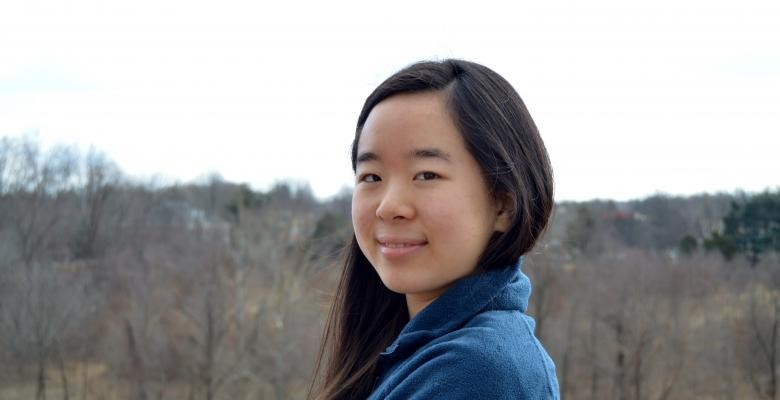Engineering Grad Sets Her Sights on Outer Space

Once Julia Di came up with the idea for the Columbia Space Initiative, events moved at warp speed.
She recruited her first new members after they overheard her ask former astronaut Mike Massimino, (ENG’84) a professor of professional practice at the Engineering School, if he might serve as a faculty advisor. (He agreed.)
Within months of the club’s formation in 2015, the team had launched a stuffed animal version of Columbia’s mascot Roaree the Lion into space on a student-designed high-altitude balloon, and later won a nationwide engineering-design competition sponsored by the National Aeronautics and Space Administration, NASA Micro-g NExT. College students around the nation were asked to build a hand-held device that astronauts could use to anchor themselves on an asteroid.
The Columbia team’s model was a cylindrical aluminum tube the length of a toaster oven with an anchoring drill that an astronaut could manually corkscrew into the sand. Pulling a handle at the top of the tube causes a series of metal plates to unfold at an upward diagonal, digging into the surrounding sand and anchoring the device in place.
If NASA ever deploys that design in space, Di might be the one to use it. Next fall, she heads to Stanford University to pursue a Ph.D. in mechanical engineering with a specialty in robotics. If all goes according to plan, she hopes someday to join the space program herself.
“It’s very beautiful up there,” says Di, who on May 16 will receive a B.S. degree in electrical engineering “It’s like a sci-fi dream. It would be a life-changing experience.”
Building things for use in outer space initially wasn’t one of Di’s interests. In her freshman year at Columbia, in 2014, she was drawn to a club called FSAE (Formula Society of Automotive Engineers), which builds a Formula-style racecar every year to race against other collegiate teams. However, cars never truly interested her. As she browsed club options in her sophomore year, Di couldn’t find anything that appealed to her.
Then she attended a panel with the producers of the 2015 Matt Damon film The Martian. She and a friend from FSAE, Keenan Albee (ENG’17), chatted about starting a space engineering club. The panel featured Massimino, and when it was over she approached him about serving as faculty advisor to a space engineering club. It started with five members and now numbers more than 70.
Di remembers the challenges involved in creating the device for the NASA competition. “They were going to test it in a giant sand bed,” she recalls. “We didn’t have sand readily available, so at about 3 a.m. a week before the thing was due we were scrounging around playgrounds and picking up sand. I’m sure anyone who saw us thought we were crazy.”
Although the original challenge required that the device hold up to 10 pounds of upward force, Columbia’s device held up more than 30. Columbia beat out teams from Purdue, Embry-Riddle Aeronautical University and University of Texas-Austin, among other schools.
There was no prize money, but many people in the space club went on to internships at NASA—including Di. At Columbia, Di also is a superuser in the Columbia Makerspace, where she trains and teaches other students to use tools such as 3D printers, laser cutters, and soldering irons, and she worked in Professor Hod Lipson’s Creative Machines Lab on a biologically inspired quadruped that looks like a spider (they call it Spyndra) that teaches itself how to walk.
“My interests have shifted so dramatically,” she says. “Three years ago I wasn’t interested in robots, and I was doing car stuff. I might like robots now, but maybe I’ll discover something at Stanford that’s completely different and fall in love with that.”